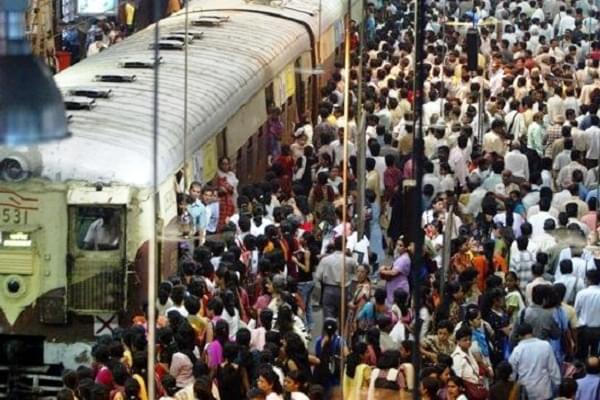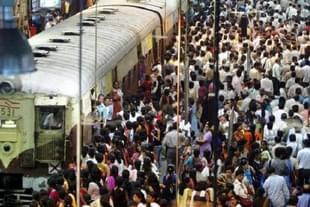Ideas
Covid-19 Is A Wake Up Call: Why Real-Time Demographic Data Is Key To Getting The Better Of Pandemics
Nandita Saikia, Jayanta Kumar Bora and Moradhvaj
Jun 08, 2020, 01:31 PM | Updated 01:31 PM IST
Save & read from anywhere!
Bookmark stories for easy access on any device or the Swarajya app.


Neither public health situation nor health statistics was as much emphasised as of now. The government, from panchayat to cabinet to policy-makers from the various sectors, is in great need of real-time and accurate data to minimise the damage caused by the Covid-19 pandemic.
This is because only high-quality mortality data disaggregated by age, sex and place can help to understand the current and future trajectory of Covid-19’s impact.
Is Covid-19 Causing Excess Deaths In India?
Demographic literature is documenting that Covid-19 is fatal to the old age population and hence speculating that this pandemic, mercifully, may lessen the impact in lower-income countries with younger populations but also weaker health systems.
However, to measure the impact of Covid-19, we need to estimate both the direct and indirect effects of the virus on health and mortality.
We can divide the total mortality rate due to coronavirus into three parts:
1) The deaths occurring due to coronavirus after the diagnosis and treatment of the disease;
2) Deaths which occurred due to Covid-19 but not reported as coronavirus deaths, because either they are not diagnosed or they are intentionally not reported due to political situation. We see such a situation in the state of West Bengal;
3) Deaths indirectly happening due to coronavirus-related emergency and stress.
Because of social distancing and lockdown, availability of, and access to regular treatment has reduced significantly. There might be a spike in deaths among people suffering from fatal diseases like cancer and hypertension because non-Covid-19 healthcare services have been disrupted.
Pregnant women may not able to get the antenatal and post-natal care on time. Moreover, women are not able to access institutional facilities for delivery care, and it may increase the risk of maternal and infant mortality.
Because of widespread sensitisation and pro-active role played by the government and administration, it appears that the Integrated Disease Surveillance Programme (IDSP), Health Management Information System (HMIS) and Integrated Health Information Platform (IHIP) together are correctly reporting the first type of deaths.
This system, however, missed the age-sex data for around 93 per cent of the infected cases until 26 April 2020. And even analysis of such data is not enough for correct modelling of the future pattern of infection and mortality.
Also, there is no single way to trace indirect deaths due to the Covid-19 pandemic. It is important to note here that the disease has reduced the number of deaths due to other causes (such as accidents, murders and suicides).
It might have also reduced air pollution-related deaths. The ideal system of getting such information is an efficient ‘cause of death’ statistics system.
However, in the absence of such a complete and effective ‘cause of death’ statistics, it is nearly impossible to estimate the net indirect effect on death by Covid-19 in India.
Another scientific way of calculating excess deaths due to Covid-19 is the analysis of daily or weekly excess mortality rates just by using death statistics.
The actual burden of Covid-19 has been estimated by analysing excess weekly deaths where high-quality and continuous death statistics is available. Regrettably, India's death registration system is far from satisfactory and does not provide enough information in the most populous states of India.
It also does not release district level up-to-date data for effective intervention. Given the poor death statistics, it is impossible to measure the correct mortality rate of Covid-19 in India.
Covid-19 And Missing Information On Migration
Covid-19 has sensitised individuals as well as local and central governments to the need for keeping a record of inter-state migration information.
Although millions of Indians move within the country, no statistical system keeps data of such massive movement.
Census collects migration data, but it happens only once in 10 years and is often published many years after the exercise. Such data are of no use in case of any emergency.
A more appropriate data system is to maintain a real-time population register of residents, preferably at the panchayat and municipality level.
Under this system, any person who intends to stay in that particular panchayat or municipality needs to register himself or herself in the local registration system.
Such data will not only give the migration statistics but will also provide a correct figure of population size at the local level that is needed to calculate fertility and mortality rates at the required time interval.
Such local-level data can be compiled at the district and state levels to get details of residents and migrant workers for intervention purposes.
Such a system called population register exists in the most advanced and welfare countries like the Netherland, Germany, and other Nordic countries. Updating the National Population Register of India every five years with a door-to-door survey does not solve the actual data gap that India is facing at the time of the coronavirus crisis.
Urgent Need For A Complete Civil Registration System And A Dynamic National Population Register
Despite a data revolution in recent decades, the condition of the demographic data system in India is far from ideal. At present, India has many overlapping demographic datasets, yet those cannot give accurate local level mortality and migration statistics.
These kinds of data are crucial for overall development of the intervention among the poor and needy. Both Civil Registration System (CRS) and National Population Register (NPR) systems exist in India but are not competent enough do epidemiological analysis to show the excess mortality in the country.
India urgently needs to invest in a full-fledged CRS and a real-time dynamic NPR. With the advancement of technology, mortality statistics can be collected and compiled on a weekly or monthly basis, whereas NPR data should be compiled in at least every six months.
Each citizen of India must cooperate with such a system since they want to avail of government facilities and protection to keep them safe. Mobile phone-based technology may be used effectively to achieve this goal.
In the era of a digital revolution, a competent and dynamic CRS and NPR is the first step to protect the interest of citizens.
At the same time, the government needs to ensure the privacy of individual-level data.
This pandemic is a much needed wake-up call to strengthen real time and regular demographic data system. Such data will help to give an appropriate response to Covid-19, and to prepare for potential pandemics in the future.




